
THREE RURAL DWELLINGS & A LISTED BUILDING. www.davidwilson-architect.com

First sunny day for a while and a good opportunity to get out of the office for site visits. The first of the replacement dwellings is well underway with roof on. Quality brick laying and natural slate for the single storey volume. Looking forward to seeing windows in.
For the replacment dwellings I followed a similar approach to house types I had designed in the early 90’s that had received an RIBA regional design award. Both dwellings take single room span volumes and express them as contemporary forms that echo back to simple vernacular buildings, linking them together to allow the larger areas that open plan contemporary living prefers. The simple volumes are no more than storey and a half and avoid the use of dormers, there are no breaks to the line of gutters.

First sunny day for a while and a good opportunity to get out of the office for site visits. The first of the replacement dwellings is well underway with roof on. Quality brick laying and natural slate for the single storey volume. Looking forward to seeing windows in.
For the replacment dwellings I followed a similar approach to house types I had designed in the early 90’s that had received an RIBA regional design award. Both dwellings take single room span volumes and express them as contemporary forms that echo back to simple vernacular buildings, linking them together to allow the larger areas that open plan contemporary living prefers. The simple volumes are no more than storey and a half and avoid the use of dormers, there are no breaks to the line of gutters.

First sunny day for a while and a good opportunity to get out of the office for site visits. The first of the replacement dwellings is well underway with roof on. Quality brick laying and natural slate for the single storey volume. Looking forward to seeing windows in.
For the replacment dwellings I followed a similar approach to house types I had designed in the early 90’s that had received an RIBA regional design award. Both dwellings take single room span volumes and express them as contemporary forms that echo back to simple vernacular buildings, linking them together to allow the larger areas that open plan contemporary living prefers. The simple volumes are no more than storey and a half and avoid the use of dormers, there are no breaks to the line of gutters.

First sunny day for a while and a good opportunity to get out of the office for site visits. The first of the replacement dwellings is well underway with roof on. Quality brick laying and natural slate for the single storey volume. Looking forward to seeing windows in.
For the replacment dwellings I followed a similar approach to house types I had designed in the early 90’s that had received an RIBA regional design award. Both dwellings take single room span volumes and express them as contemporary forms that echo back to simple vernacular buildings, linking them together to allow the larger areas that open plan contemporary living prefers. The simple volumes are no more than storey and a half and avoid the use of dormers, there are no breaks to the line of gutters.

First sunny day for a while and a good opportunity to get out of the office for site visits. The first of the replacement dwellings is well underway with roof on. Quality brick laying and natural slate for the single storey volume. Looking forward to seeing windows in.
For the replacment dwellings I followed a similar approach to house types I had designed in the early 90’s that had received an RIBA regional design award. Both dwellings take single room span volumes and express them as contemporary forms that echo back to simple vernacular buildings, linking them together to allow the larger areas that open plan contemporary living prefers. The simple volumes are no more than storey and a half and avoid the use of dormers, there are no breaks to the line of gutters.

As this is a sensitive site and involves a listed group of buildings and more than one department assessing the solutions, ongoing consultation during the design process seemed the right thing to do. There were two stages of consultation with the Historic Building Unit and the Planning Department, the first prior to the purchase of the site and the second at sketch design stage. Road service were also consulted with regard a new access for the second replacement dwelling at sketch design stage. This was all prior to a planning application and application for listed building consent and helped greatly in the shaping of a design strategy that was acceptable to all departments.
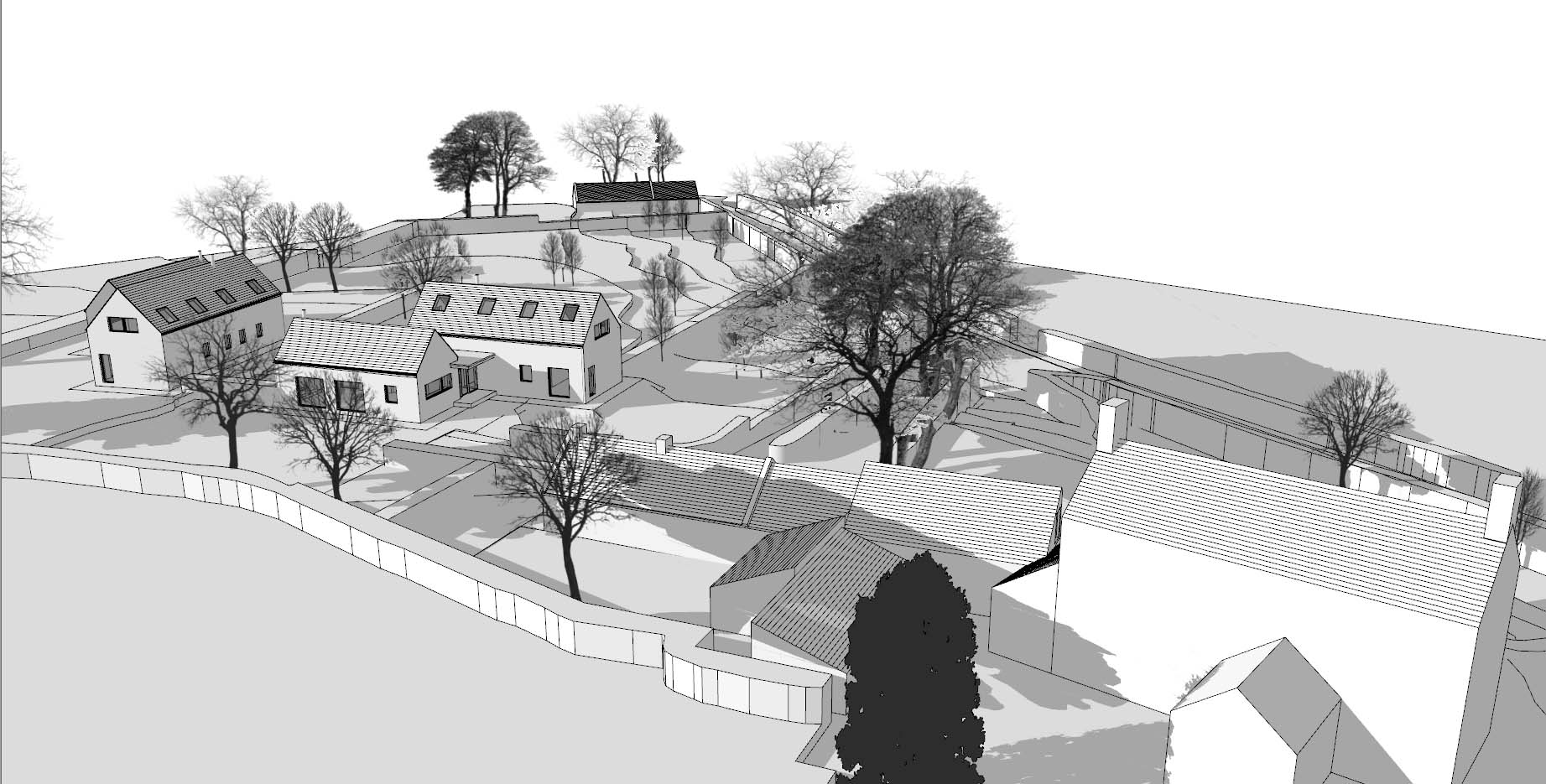
My clients initial aim in purchasing the site was to build a modest family home replacing the existing cottages, or in the front paddock close to the sheds. They wanted to keep the house on the high ground toward the rear Southern boundary for the view and southern aspect. With the client I made initial inspections of the existing cottage terrace. It was apparent that the sections close to the Ballyvester house boundary, while dilapidated, appeared authentic as far as construction, windows and materials. The end third of the terrace,(also dilapidated) was compromised with saw cut window openings, concrete heads, sills and render, with a beauty board interior. I carried out a measured and photographic survey of the property and organised a topographical survey of the site.

One possibility – the development of the existing cottage as the family home raised a number of problems. The condition of much of the construction and the logic of refurbishing the parts that were of very poor quality. The cost of refurbishment. The position of the terrace very close to the rear Southern Boundary leaves little space. To keep the terrace look at the front, extensions and links to rooms would have to be added to the rear further reducing amenity space. Maintaining access to the fields to the rear via the traditional lane approach again limited the cottage as the main dwelling pushed to the rear of the site.
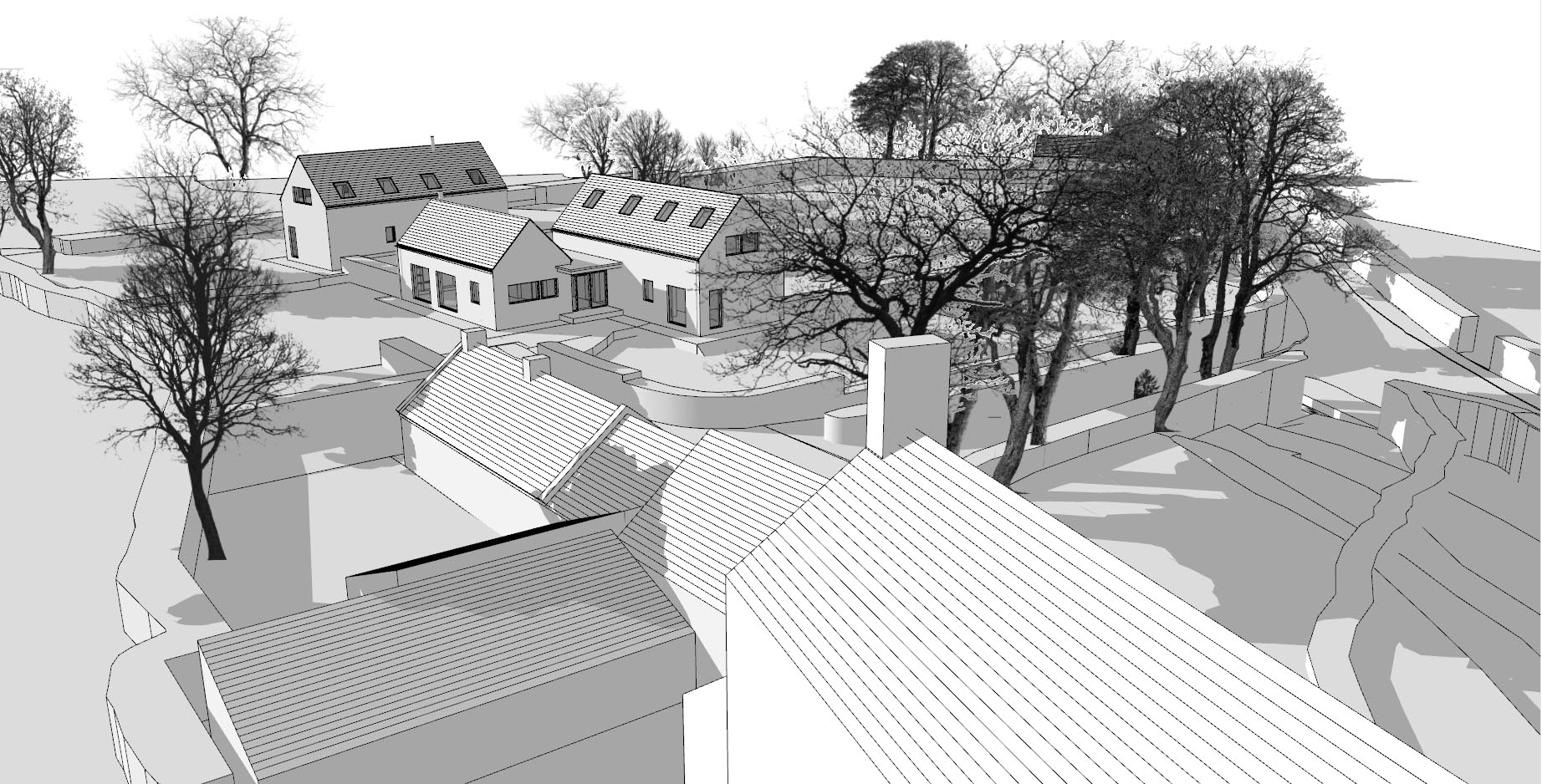
The fact that the existing terrace appeared to have contained three dwellings with a fourth cottage in the yard raised the possibility of an application for more than one replacement dwelling. We proposed a site strategy retaining the authentic part of the terrace that makes the setting, close to Ballyvester house, visible from the road and lane approach. The remaining third and all flat roof extensions and corrugated clad sheds to the rear would be removed. This third of the terrace is not visible from the road due to the raised ground level and mature hedgerow.
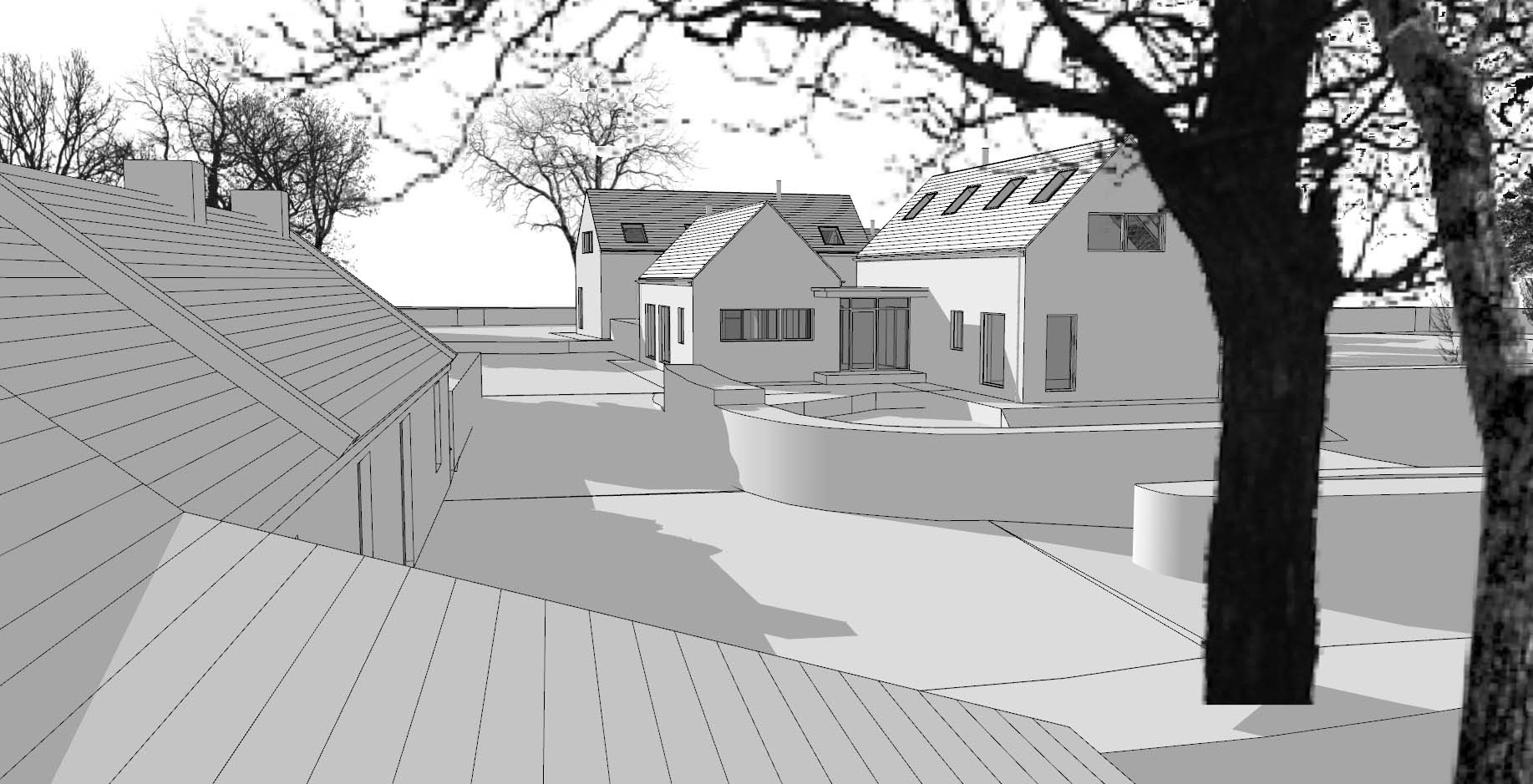
The remaining existing cottages would be retained as one sensitively refurbished dwelling. Two appropriate similarly designed replacement dwellings would contribute to the “Clachan” concept, creating a collection of rural forms.
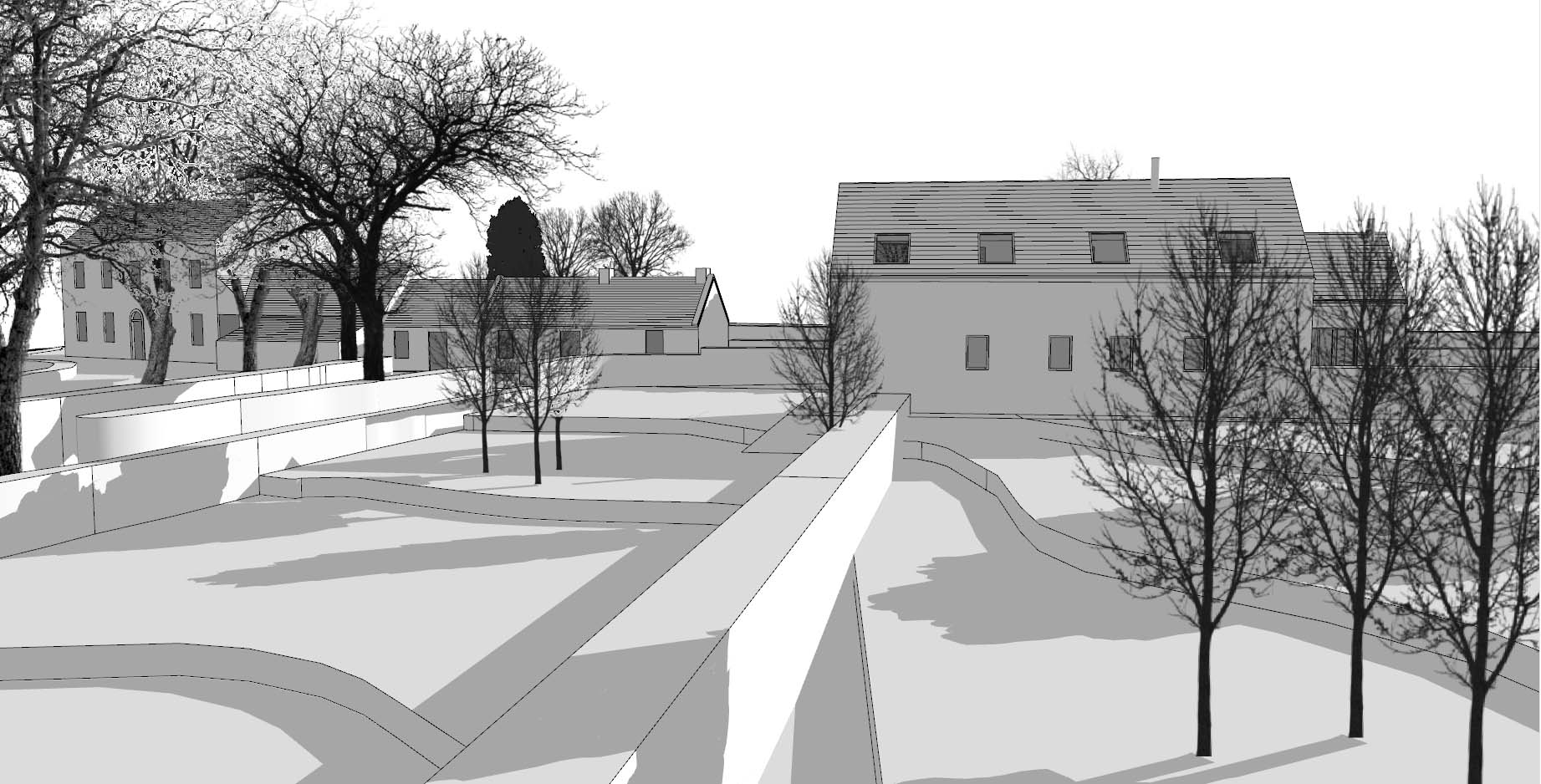
For the replacment dwellings I followed a similar approach to house types I had designed in the early 90’s that had received an RIBA regional design award. Both dwellings take single room span volumes and express them as contemporary forms that echo back to simple vernacular buildings, linking them together to allow the larger areas that open plan contemporary living prefers. The simple volumes are no more than storey and a half and avoid the use of dormers, there are no breaks to the line of gutters.

Each house type consists of a single storey living area with Kitchen, Dining & Lounge, and an entrance link to a storey and a half volume containing bedrooms, bathrooms, living room and utility. The roofs are slate, with the single storey volume clad in traditional rustic terracotta clay brick and the storey and a half volume in painted render and masonry.
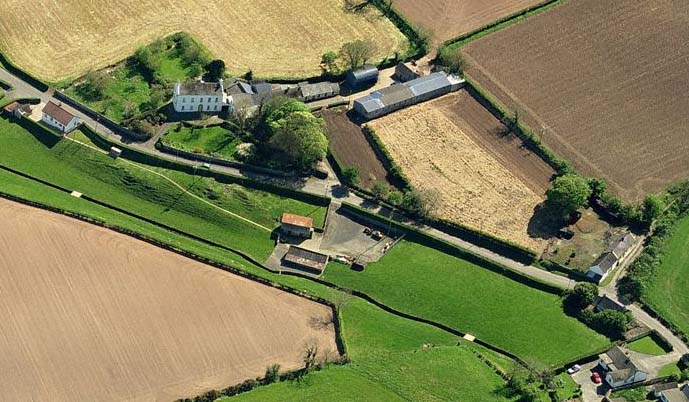
Aerial View of existing site from the North
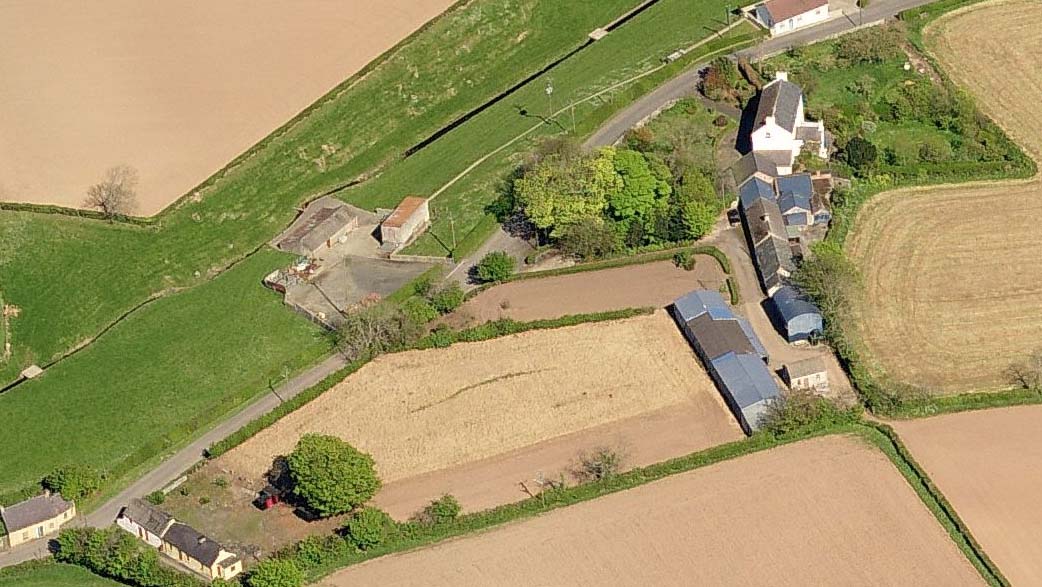
Aerial View of existing site from the West

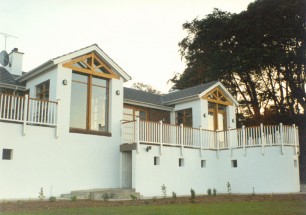
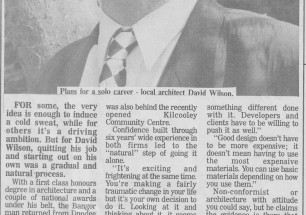
Leave a Reply